Archivo de noticias y eventos
251 - 300 de un total de 1805
También puede acceder a la lista de noticias publicadas en los medios relacionadas con el Instituto de Astrofísica de Andalucía - CSIC.
Pages

|
21/09/2022 - 16:30
SO Webloquio: Dwarf Galaxies and the Smallest Supermassive Black Holes Despite traditional thinking, an appreciable population of (relatively small) supermassive black holes may be lurking in dwarf galaxies. Before the last decade, nearly all known supermassive black holes were in the nuclei of giant galaxies and the existence of such black holes in dwarf galaxies was highly controversial. The field has now been transformed, with a growing community of researchers working on a variety of observational studies... Dr. Amy Reines |

|
21/06/2022 - 12:30
SO webloquio: Star-planet plasma interactions and radio emissions Exoplanets are expected to sustain various plasma interactions with their parent star, depending on the stellar and planetary magnetic field strengths and on the sub- or super-Alfvénic wind speed at the planet’s orbit. Three such interactions lead to electron acceleration and subsequent radio emissions in our solar system: magnetized planets hit by the super-Alfvénic solar wind, and the sub-Alfvénic interactions of the unmagnetized moon Io and... Dr. Philippe Zarka |

|
07/07/2022 - 12:30
SO Webloquio: Optical interferometric studies of star and planet formation A first step towards understanding planetary formation is the characterisation of the structure and evolution of protoplanetary discs. Although the large scale disc is understood in some detail, very little is known about the inner few au. In this region, dust grains sublimate, and accretion and ejection take place, affecting the entire disk structure and evolution. In this talk, I will review how optical interferometric observations can... Dr. Rebeca García López |

|
03/05/2022 - 12:30
Radio astronomy in the pre-SKA era: What can Apertif do for you? With the Square Kilometre Array still several years away, SKA pathfinder telescopes are already enabling transformational science in radio astronomy with their astounding improvements in field-of-view, sensitivity, spatial resolution, and spectral bandwidth coverage. The APERture Tile In Focus (Apertif) is one such SKA pathfinder: a phased array feed instrument upgrade to the Westerbork Synthesis Radio Telescope that increases the field-of-view... Dr Kelley Hess |

|
14/06/2022 - 12:30
Detailed equilibrium and dynamical tides: impact on circularization and synchronization in open clusters Binary stars evolve into chemically-peculiar objects and are a major driver of the Galactic enrichment of heavy elements. During their evolution they undergo interactions, including tides, that circularize their orbits and synchronize stellar spins, impacting both individual systems and stellar populations. My recent work introduces an accurate implementation of equilibrium and dynamical tides in the stellar population code binary_c, relying... Dr. Giovanni Mirouh |

|
31/05/2022 - 12:30
SO Webloquio: Empirical and physical properties of Lyman continuum emitters Lyman continuum emitters are galaxies showing escaping ionizing radiation, which thus contributes to ionizing the intergalactic medium. They may be the dominant source of cosmic reionization. I will present an overview of the observations and modeling of low-z analogs of the sources of cosmic reionisation recently discovered. HST observations, including UV spectroscopy with COS and rest-UV imaging with the WFC3, combined with ground-based... Dr. Daniel Schaerer |

|
24/05/2022 - 12:30
Time domain astronomy with future X-ray satellites Accreting black holes emit in X-rays at the wave-band in which THESEUS will be observing (0.3 keV-20 MeV) due to their extreme physical conditions. The softer energy range is devoted to thermal emission from the accretion disc and the harder is due to the existence of a hard X-ray emitting corona (with undefined geometry so far). The importance of one component versus the other gives rise to the diverse state classification of accreting black... Dr. Maria D. Caballero-Garcia |

|
14/07/2022 - 12:30
A journey into the Perseus cluster of galaxies The central black hole of active galaxies accretes large amounts of matter and powers jets of relativistic particles that can propagate beyond the host galaxy. Radio galaxies are particularly bright at ∼ GHz frequencies, when the accelerated electrons interact with the magnetic field and produce strong synchrotron emission. Such galaxies residing in clusters evolve in a hot, diffuse, X-ray emitting plasma (the intracluster medium, ICM) which is... Dr. Marie-Lou Gendron-Marsolais |

|
26/04/2022 - 12:30
Destroying Planetary Systems Modern astronomy invests a large amount of effort to search and characterise planetary systems around solar-like stars. In particular, at early stages of their formations in proto-planetary disks. However, we barely know much about the capacities of the planets to survive the harsh environments produced by their host stars during their evolution. In this talk, I will describe the effects a planet can produce by helping shape the mass loss of... Dr. Jesús Toala |

|
24/03/2022 - 12:30
Is it possible to simulate time machines in a laboratory? General Relativity is the most succesful theory we have for describing gravitational phenomena. Its range of applicability is vast: from solar system scales to cosmological scales. It is well-known that GR allows the existence of time machines: devices that are able to generate Closed-Timelike-Curves (CTCs). Although these kind of objects are allowed in GR, most researchers believe that they cannot occur on macroscopic scales. However, it is... Gerardo Garcia |
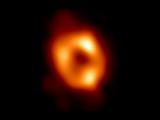
|
20/05/2022 - 11:30
Imaging the supermassive black hole at the galactic center with the EHT We present the first Event Horizon Telescope (EHT) observations of Sagittarius A* (Sgr A*), the Galactic center source associated with a supermassive black hole. These observations were conducted in 2017 using a global interferometric array of eight telescopes operating at a wavelength of λ = 1.3 mm. The EHT data resolve a compact emission region with intrahour variability. A variety of imaging and modeling analyses all support an image that... José Luis Gómez, Rocco Lico, Guang-Yao Zhao, Ilje Cho, Antonio Fuentes, y Thalia Traianou |

|
11/05/2022 - 12:30
SO Coloquio: Stellar clustering connecting the formation and evolution of galaxies to the formation and evolution of us The clustered nature of star formation leaves a long-term imprint on galaxies, stars, and planets. At young ages, stellar clustering subdivides galaxies into individual building blocks undergoing vigorous, feedback-driven life cycles that vary with the galactic environment. These units structure the interstellar medium spatially, dynamically and chemically, and collectively define how galaxies form stars. At old ages, the relics of clustered... Dr. Diederik Kruijssen |

|
12/05/2022 - 12:30
SO Coloquio: The cloud-scale baryon cycle across the nearby galaxy population The cycling of matter in galaxies between molecular clouds, stars and feedback is a major driver of galaxy evolution. However, it remains a major challenge to derive a theory of how galaxies turn their gas into stars and how stellar feedback affects the subsequent star formation on the cloud scale, as a function of the galactic environment. Star formation in galaxies is expected to be highly dependent on the galactic structure and dynamics,... Dr. Mélanie Chevance |

|
19/05/2022 - 12:30
SO Webloquio: Charting the first billion years of our Universe with the Square Kilometre Array The first billion years witnessed the dawn of the first galaxies, eventually culminating in the final phase change of our Universe: the Epoch of Reionization (EoR). Recent observations allowed us limited glimpses into these epochs, improving our understanding of the timing of the EoR. However, we still do not understand the first galaxies and black holes, the vast majority of which are too faint to be seen directly in the foreseeable future.... Dr. Andrei Mesinger |

|
07/04/2022 - 13:00
SO Webloquio: Measuring the Magnetic Fields of Exoplanets with Star-Planet Interactions Planets interact with their host stars through gravity, radiation and magnetic fields. For giant planets orbiting stars within ~20 stellar radii (=0.1 AU for a Sun-like star), magnetic star-planet interactions (SPI) are observable at a range of wavelengths with a variety of photometric, spectroscopic and spectropolarimetric techniques. At such close distances, planets orbit within the sub-alfvénic radius of the star, where magnetic interactions... Dr. Evgenya Shkolnik |
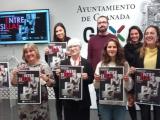
|
09/03/2022
"Entre sillas": seis voces femeninas para analizar la situación de la mujer en distintos ámbitos La actividad, organizada por el Ayuntamiento de Granada y el Instituto de Astrofísica de Andalucía, tendrá lugar el 10 de marzo a las 20.30 horas en el Teatro del Zaidín Isidro Olgoso dentro de las actividades organizadas por el Día Internacional de las Mujeres. |

|
20/04/2022 - 12:30
Turning Trash into Treasure: How OH megamasers are contaminating next-generation HI surveys and what they can tell us about galaxy evolution OH megamasers (OHMs) are rare, luminous masers found in (ultra-)luminous infrared galaxies ([U]LIRGs). The dominant OH masing line at 1667 MHz can spoof the 1420 MHz neutral hydrogen (HI) line in untargeted HI emission line surveys. This ambiguity creates a potential source of “contamination” in HI surveys, particularly for next-generation surveys that will reach groundbreaking sensitivities and redshifts. In this talk, I will present... Dr. Hayley Roberts |

|
31/03/2022 - 12:30
How the intracluster light is going to change your life! There are a huge number of astrophysical phenomena that remain barely studied due to the lack of large, multiwavelength and deep optical surveys. This is the Universe with the lowest density of stars, largely unseen by past large field surveys like the Sloan Digital Sky Survey (SDSS). For instance, only a handful of galaxy clusters have been observed with enough depth to witness the intracluster light (ICL), made up of stars that drift freely... Dr. Mireia Montes |

|
28/04/2022 - 12:30
SO Webloquio: When artificial intelligence meets astronomy: celestial object census Over the centuries, astronomers have continued to improve the performance of telescopes and the techniques for observing and analysing data. Nowadays, humans are building more and more advanced telescopes with larger and deeper observations, reaching terabytes and even petabytes of data. The Square Kilometre Array (SKA) radio telescope, the most ambitious project in astronomy under construction, is expected to produce more than 700 petabytes of... Dr. An Tao |

|
21/04/2022 - 12:30
SO Coloquio: Constraints on the origin of free-floating planets from the mass function The stellar mass function is a fundamental parameter to constrain star formation models. Although the stellar content has been extensively studied since Salpeter's first work in 1955, the study of the planetary mass regime is only now becoming feasible. I will present a recent census of the Upper Scorpius and Ophiuchus star- forming region, where we identified between 70 and 170 free- floating planets. This is by far the largest sample of... Dra. Núria Miret Roig |
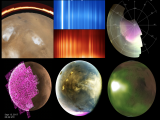
|
17/03/2022 - 12:30
Surprises from MAVEN at Mars: Aurora, meteor showers, and a new water loss paradigm The Mars Atmosphere and Volatile EvolutioN (MAVEN) spacecraft carries the Imaging Ultraviolet Spectrograph (IUVS) to study the Mars atmosphere and atmospheric escape. After more than two Mars years in orbit, IUVS has gained new insights on key phenomena at Mars including dayglow, nightglow, aurora, meteor showers, clouds, solar-planetary interactions and atmospheric evolution. In this presentation, I will highlight three key results... Dr. Nick Schneider |

|
02/06/2022 - 12:30
SO Coloquio: The Antikythera Mechanism and the Mechanical Universe The Antikythera Mechanism. An astronomical calculator and display device found in a first century BCE shipwreck, it is mechanically more sophisticated than anything known from the subsequent millennium. I want to argue that we should be showing admiration rather than amazement, and that the Mechanism fits rather well into its historic context. But this fit has major implications for the development of humanity’s view of the Universe. Prof. Michael G. Edmunds |
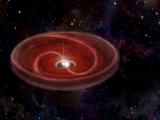
|
23/06/2022 - 12:30
Disks around evolved binaries: do they form second-generation planets? Most of the planets are formed around young stars. But can they also form around dying stars? The origin of the diversity and complexity of the detected exoplanetary systems stems from how they form in protoplanetary disks. These disks are intensively studied around young stars thanks to the high-angular resolution provided by recent instruments (VLT, ALMA). However, similar disks are also found around evolved stars, namely post-AGB binaries,... Dr. Jacques Kluska |

|
21/03/2022 - 01/04/2022
PySnacks for beginners Online |
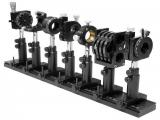
|
07/02/2022 - 18/02/2022
SO Instrumentation School IX. Opto-mechanical systems and mechanical design of IR instrumentation Granada |

|
25/01/2022 - 12:30
Cosmological QUOKKAS: Proof of concept and early results on the Hubble Constant tension Distances are one of the most important yet difficult to get quantities in astronomy. Normally, astronomers use redshifts (which are relatively easy to measure) as distance measure, but this only works if one assumes that there is a relationship between redshift and distance. The relationship between redshift and distance was first observationally verified in the 1920s by Edwin Hubble. He found that the further away a galaxy was, the galaxy... Dr. Jeff Hodgson |
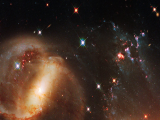
|
23/05/2022 - 27/05/2022
IAA-CSIC Severo Ochoa Advanced School on Galaxy Evolution Granada |

|
20/01/2022 - 12:30
Astronomy for attaining sustainable development goals in Africa Education and its contribution to science, technology, and innovation are the key points for combating poverty in the long term. Education is also a key point for empowering girls and women, which is fundamental for achieving the United Nations Sustainable Development Goals (SDGs). Astronomy is a powerful tool to promote education and science but, in addition to that, it is also one of the leading sciences for bringing strong technological... Dra. Mirjana Povic |
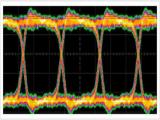
|
04/04/2022 - 08/04/2022
SO Instrumentation School VIII. Signal Integrity and Electromagnetic Compatibility in Electronic Devices Granada |

|
17/01/2022 - 22/01/2022
SO Instrumentation School VII. Metrology with PC-DMIS on a portable Romer Absolute Arms Granada |

|
14/03/2022 - 18/03/2022
English for Academic Purposes - an online workshop series for young researchers Granada |

|
05/05/2022 - 12:30
Unexplored outflows in nearby low luminosity AGNs: the case of NGC 1052 NGC1052 is considered the prototype of AGN-LINERs, an AGN family at low-luminosity for which, so far, the role of outflows in their evolution has been studied the less. Thanks to MUSE and MEGARA IFS-cubes we found that the stars are distributed in a dynamically hot disc whereas the ionised gas is detected mostly in the polar direction up to 3.3 kpc. We found evidences evidence of an ionised gas outflow (jet-powered) propagating in a cocoon of... Dra. Sara Cazzoli |

|
24/02/2022 - 12:30
SO Webloquio: Exploring the transient radio sky with the SKA and its precursors Radio astronomical observations probe particle acceleration in some of the most extreme environments in the Universe. For example, we can trace the relativistic jets produced by accreting black holes; observe flashes from hyper-magnetised neutron stars; and study the aftermath of stars that are ripped to shreds as they pass close to super-massive black holes. These events provide critical information about the extremes of the Universe, but they... Dr Jason Hessels |

|
27/01/2022 - 12:30
La IAU más cerca que nunca The International Astronomical Union (IAU) has more that 13000 members. Each country pays according to a table that has to do with the number of people belongin to the IAU. But the IAU is not only a club of members but has a number of activities that are open to every member. In particular the IAU run 9 Symposia per year with topics relevant to current astrophysics. On years where there are a General Assembly on top of the 9 Symposia the IAU... Dr. José Miguel Rodriguez Espinoza |

|
17/02/2022 - 12:30
The Africa Millimetre Telescope project - extending the EHT The Africa Millimetre Telescope (AMT) project led by the Radboud University and the University of Namibia aims to realise a new telescope on the Gamsberg mountain in Namibia to extend the existing network of telescopes that together form the EventHorizonTelescope (EHT). For the future of the EHT more independent nodes in the network are needed to increase the overal redundancy of the network and to improve the image quality and allow for time-... Dr. Marc Klein Wolt |

|
25/11/2021 - 19:00
Alfonso X, el rey que supo ser sabio En esta charla se repasarán algunas de sus contribuciones a la cultura y al saber, priorizando aquellas de carácter científico. Antonio Claret |

|
21/10/2021 - 22/02/2022
Spanish for beginners at the IAA-CSIC Granada |

|
15/11/2021 - 19/11/2021
SO Instrumentation School: V. Project management in the 3DExperience environment, including document and requirements management On line |

|
11/01/2022 - 12:30
SO Webloquio: Active Galactic Nuclei as seen from the 7 X-ray eyes of eROSITA Active Galactic Nuclei (AGN) are not longer considered part of a small and exotic source population but are now widely accepted to play a significant role in the evolution of galaxies through cosmic time. However, even 20 years after the realization of the close link between the galaxies and the active SMBH that they host, the various mechanisms and the interconnection are not fully clear. Two complementary approaches are followed to deepen our... Dra. Mara Salvato |

|
09/06/2022 - 16:30
SO Webloquio: Space Weather in an Era of Innovative Science The newest generation of solar observational data is allowing a pivot toward making connections in the various solar physics domains and facilitating advanced modeling for space weather conditions and impacts. We study important physical couplings in the solar atmospheric layers, as well as connections from the solar corona through the heliosphere. To advance our understanding of how solar activity and variability impact space weather conditions... Dr. Holly Gilbert |

|
10/03/2022 - 12:30
The RoboPol Program: Optical Polarimetric Monitoring of Blazars Blazars are a subclass of Active Galactic Nuclei with relativistic jets pointing at us. For this reason the highly amplified polarized synchrotron emission from their jets dominates in the optical band. Typically, the electric vector position angle (EVPA) of the optical polarized emission in blazars varies in an erratic way. However, in rare cases the EVPA displays long, smooth and monotonic rotations. Being puzzled by this phenomenon missing a... Dr. Dimitriy Blinov |

|
23/11/2021 - 12:30
Search for MIlli-LEnses (SMILE) to discriminate between dark matter models Projects aimed at characterising dark matter properties make use of very different approaches. One such approach is to look for strong gravitational lens systems. Gravitational lensed images with angular separation on milliarcsecond scales probe gravitational lens systems where the lens is a compact object with mass in the range 10^6-10^9 solar masses, i.e a supermassive compact object (SMCO). This mass range is particularly critical for the... Dra. Carolina Casadio |

|
03/03/2022 - 12:30
The continuous rise of bulges out of galactic disks A tantalizing enigma in extragalactic astronomy concerns the chronology and driving mechanisms of the buildup of the central luminosity excess (bulge) in spiral galaxies like our Milky Way, i.e. in systems referred to as late-type galaxies (LTGs) in the Hubble classification scheme. The standard scenario envisages a two-phase galaxy formation process, with the bulge assembling first in a quick and violent quasi-monolithic episode, with the disk... Dr. Iris Breda |

|
04/11/2021 - 12:30
Identification and characterisation of emission line galaxies with J-PAS The Javalambre-Physics of the Accelerating Universe Astrophysical Survey (J-PAS) is expected to map thousands of square degrees of the northern sky with 56 narrow band filters (spectral resolution of R around 60) in the upcoming years. This resolution allows to study emission line galaxies (ELG) with equivalent widths of a few armstrongs. Meanwhile the Pathfinder J-PAS camera observed 1 deg^2 with the same photometric system than J-PAS, named... Gines Martinez Solaeche |

|
14/10/2021 - 12:30
The miniJPAS survey: the galaxy populations in the miniJPAS cluster mJPC2470-1771 Galaxy clusters are one of the largest structures in the Universe. Due to the interaction among the galaxy members, they are a great laboratory to study the role of the environment in galaxy evolution. J-PAS survey will soon start to scan thousands of square degrees in the sky, and with its large great field of view (4.2 square degrees) and filter system (56 narrowband filters and 4 broadband filters in the optical spectral range) will provide... Julio Rodriguez Martin |
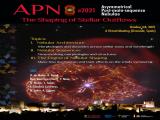
|
04/10/2021 - 08/10/2021
Asymmetrical Post-main-sequence Nebulae 8 e2021: The Shaping of Stellar Outflows Online |

|
20/10/2021 - 22/10/2021
SO Instrumentation School: IV. Vacuum Technology Granada |

|
13/01/2022 - 12:30
Galaxy morphologies in multi-wavelength surveys In this talk I will present novel results obtained by using a combination of broad and narrow band optical photometry, from the J-PAS and S-PLUS surveys, in the determination and study galaxy of galaxies’ morphologies. In particular we used Morfometrika and GALFITM to recover non-parametric and parametric values to characterize galaxies’ shapes, as well as a deep learning method for the S-PLUS survey to classify galaxies into early and late type... Dra. Arianna Cortesi |

|
28/10/2021 - 12:30
Seen the Unseen in Planetary Nebulae with High-dispersion Integral Field Spectroscopic Observations Planetary nebulae (PNe), the short-lived progeny of low- and intermediate-mass stars, may embed structures with varying kinematical, physical and chemical properties that disclose the rich variety of processes occurring during their formation. These structures hide in direct images, projected against the bright nebular emission, but the advent of high-dispersion integral field spectroscopic (HD IFS) observations provide the means to... Dr. Martín Guerrero |
